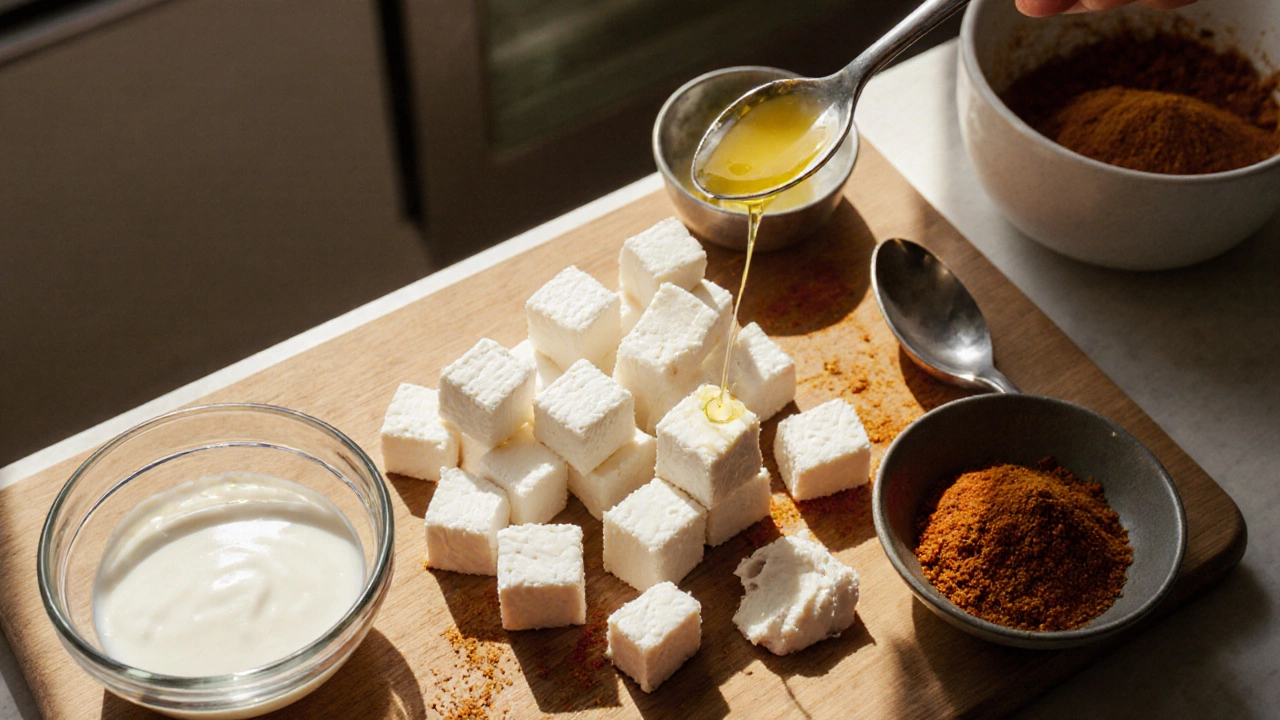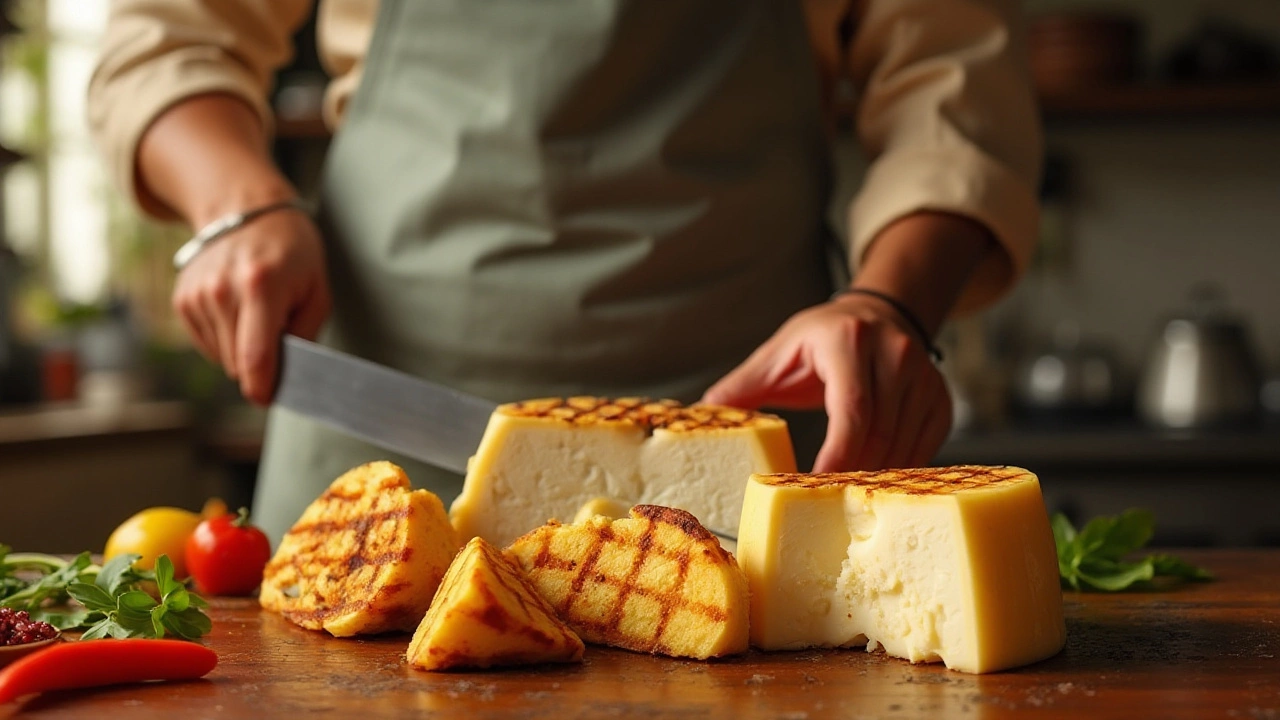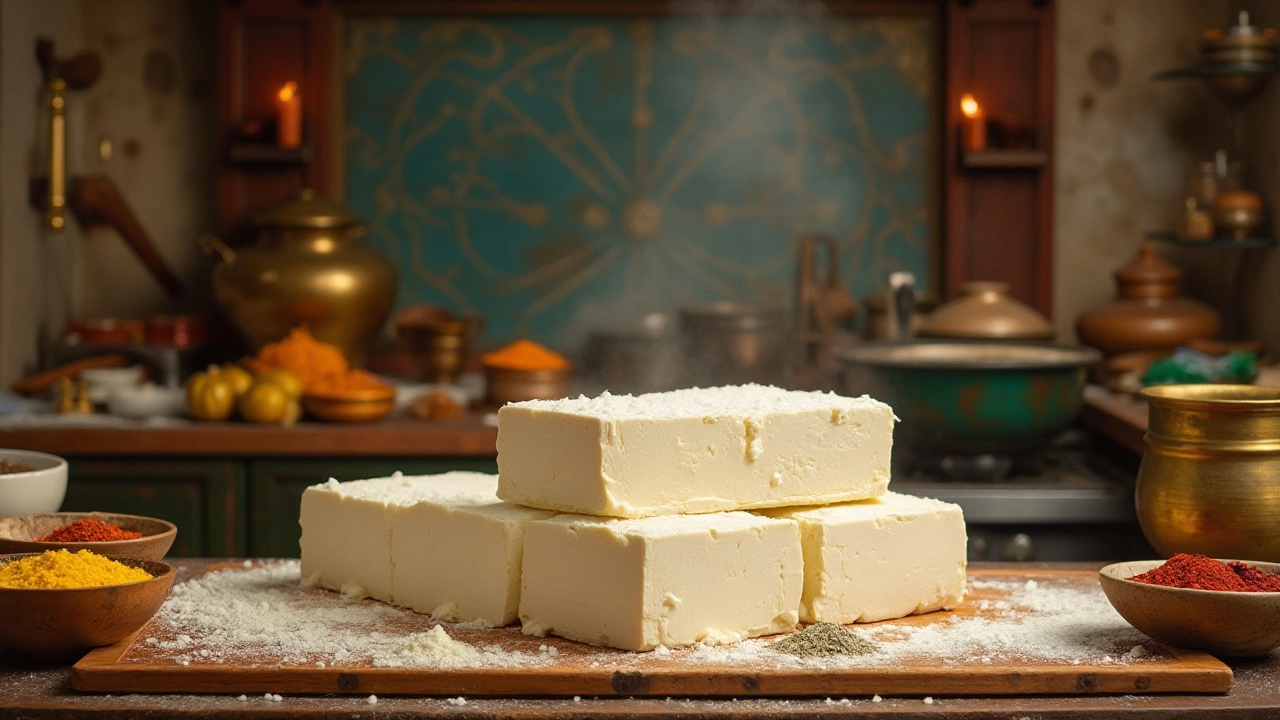Paneer – Your Everyday Indian Cheese Made Simple
If you’ve ever wondered how to make the most of paneer, you’re in the right place. Paneer is a fresh, soft cheese that never melts, making it perfect for frying, grilling, or adding to curries. It’s high in protein, low in carbs, and works in everything from breakfast wraps to rich butter sauces. Let’s break down what paneer is, how to pick the best ones, and a couple of easy dishes you can start tonight.
What Makes Paneer So Popular?
Paneer is made by curdling milk with an acid like lemon juice or vinegar, then pressing the curds into a block. Because it’s not aged, it keeps a mild flavor that soaks up spices like a sponge. That’s why you’ll find it in north‑Indian dishes like palak paneer and in street‑food snacks like paneer tikka. It’s also a favorite among vegetarians who need a solid protein source without meat.
One reason paneer feels pricey in some places (Australia, for example) is the import cost and limited local dairy supply. A quick tip: look for locally‑made paneer at farmer’s markets or make your own at home. Homemade paneer costs pennies, and you control the texture – soft for curries or firmer for grilling.
Easy Paneer Recipes and Cooking Tricks
Start with a simple stir‑fry: cut paneer into cubes, toss with a little oil, salt, and chili powder, and fry until golden. The outside gets a crisp crust while the inside stays soft. Add this to a pan of mixed veggies and you have a quick, balanced meal.
If you prefer a sauce, try a quick butter paneer. Melt butter, add garlic, ginger, and a pinch of garam masala, then stir in tomato puree. Drop the fried paneer cubes in, let them simmer for five minutes, and finish with a splash of cream. The result is rich, comforting, and ready in under 20 minutes.
For a healthier twist, press the paneer extra‑firm, drizzle with olive oil, and grill on a tabletop grill. Serve with a squeeze of lemon and a side of fresh cucumber salad. The grill marks add a smoky flavor without extra fat.
Another handy tip is to soak paneer in warm water for 10 minutes before cooking. This prevents it from drying out and makes it easier to absorb sauces. If you’re baking, coat the cubes in a thin layer of chickpea flour; the coating helps keep moisture in while giving a subtle crunch.
Want to stretch your pantry? Freeze paneer cubes on a tray, then transfer to a bag. Frozen paneer works great in stews because it retains its shape and soaks up the broth.
Finally, remember paneer pairs well with sweet flavors too. A quick paneer‑pudding uses milk, sugar, cardamom, and a handful of paneer crumbles, cooked until thick. It’s a comforting dessert that feels familiar yet different.
Whether you’re buying or making it, the key to great paneer is freshness and the right cooking method. Keep these tips in mind, and you’ll have a versatile protein ready for any meal. Happy cooking!
Do You Need to Marinate Paneer? Benefits, Tips & Best Practices
Discover if marinating paneer is essential, learn quick tips, flavor combos, and step-by-step methods to boost taste and texture for grills, tandoors, or sauces.
What’s the English Equivalent of Paneer? A Simple Guide
Discover the English name for paneer, compare it with cottage cheese, ricotta, and queso fresco, and learn how to substitute it in recipes.
Is Paneer Similar to Halloumi - A Delicious Dairy Exploration
Dive into the culinary world of paneer and halloumi as we explore their similarities and differences. Both delightful cheese options hold unique spots in various cuisines, yet they often lead to debate on how alike they truly are. This article delves into their origins, textures, and cooking methods to reveal if paneer is truly like halloumi. Perfect for cheese lovers looking to make their own at home.
Choosing the Best Milk for Homemade Paneer: A Comprehensive Guide
Making paneer at home can be a rewarding experience, but choosing the right milk is crucial for the perfect texture and flavor. While milk options like cow, buffalo, and plant-based alternatives offer different results, each has its own distinct qualities that impact the paneer making process. Purity, fat content, and freshness are key factors to consider when selecting milk for your paneer. This article explores the various types of milk available, offering tips and insights to help you create the best homemade paneer.
Understanding the Downsides of Consuming Homemade Paneer Daily
Paneer, a fresh cheese common in Indian cuisine, is a popular choice for its creamy texture and high protein content. While delightful and versatile, eating paneer every day might not be the best idea for some people's diets. Regular consumption can pose challenges such as increased calorie intake, high levels of saturated fat, and potential digestive issues. Understanding these downsides can help you make more informed dietary choices when including paneer in your meals.




